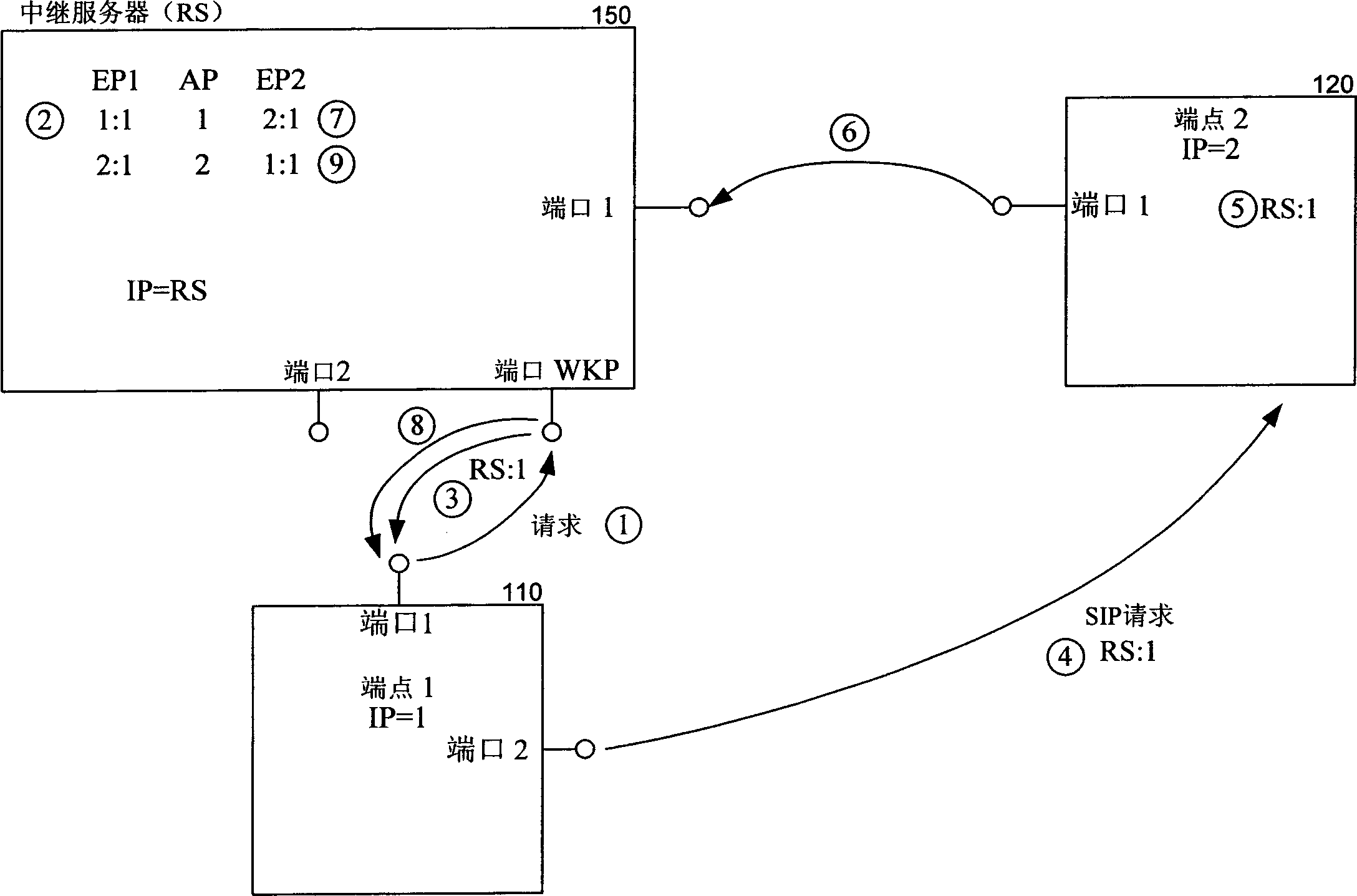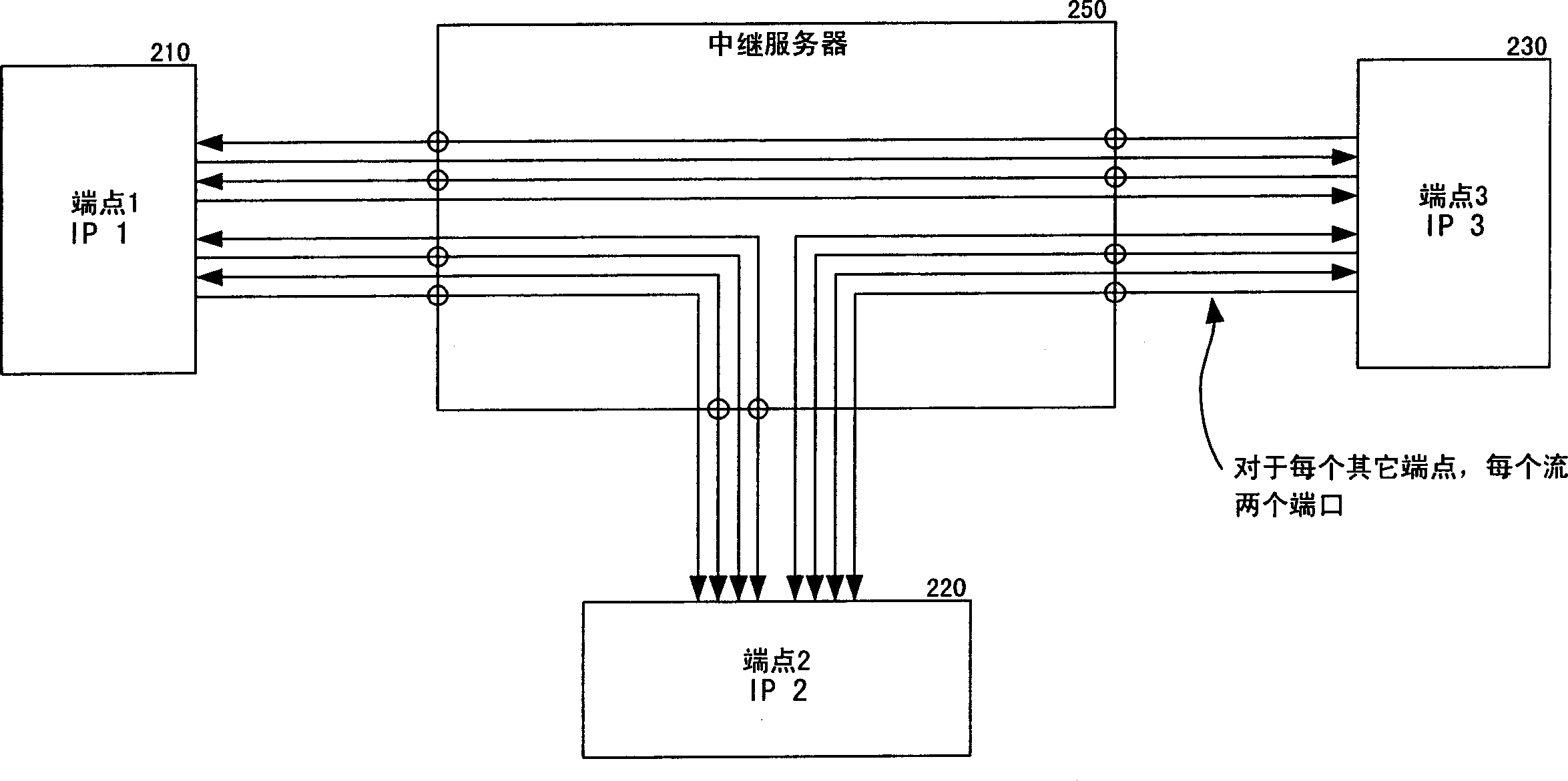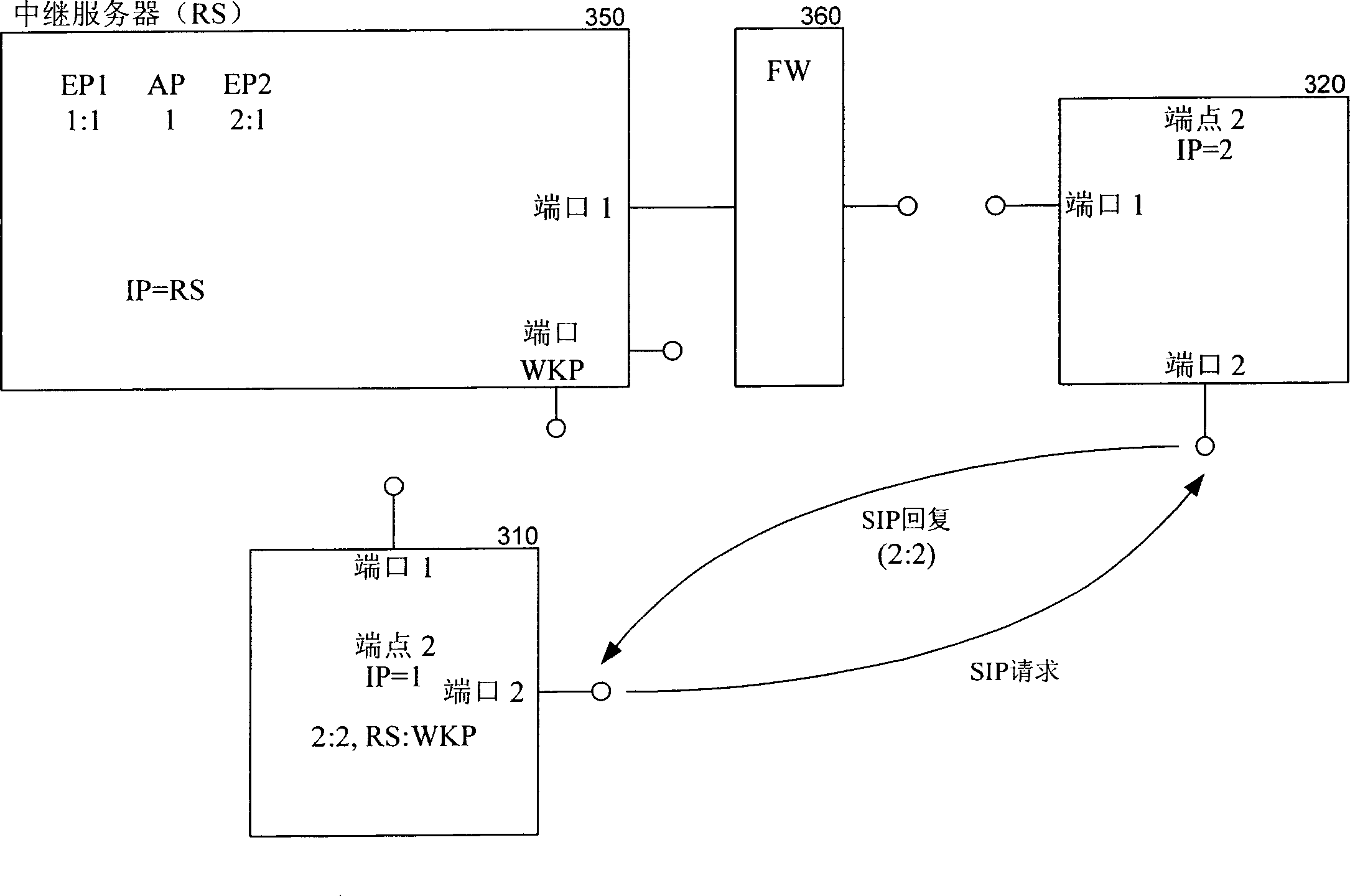Method and system for reducing the number of ports allocated by a relay
A technology for assigning ports and port numbers, applied in the direction of digital transmission systems, vehicles for freight, transmission systems, etc.
- Summary
- Abstract
- Description
- Claims
- Application Information
AI Technical Summary
Problems solved by technology
Method used
Image
Examples
Embodiment Construction
[0019] The present invention provides a method and system for reducing the number of ports allocated by a relay server. In one embodiment, a connection system uses bidirectional technology to establish a connection between two endpoints (e.g., client computers) via a relay server, which can be used bidirectionally to send data from a first endpoint to a second endpoint. A stream and send a stream from the second endpoint to the first endpoint. Because the connection system only establishes one bidirectional connection, the relay server only allocates one port for this pair, which reduces the number of ports to be allocated by as much as 50%. To establish a bidirectional connection, the first endpoint requests the relay server to allocate a port. The first endpoint may send a request to a well-known port of the relay server. Upon receiving the request, the relay server allocates a port and creates a mapping relationship between the allocated port and the first endpoint. The ...
PUM
 Login to View More
Login to View More Abstract
Description
Claims
Application Information
 Login to View More
Login to View More - R&D
- Intellectual Property
- Life Sciences
- Materials
- Tech Scout
- Unparalleled Data Quality
- Higher Quality Content
- 60% Fewer Hallucinations
Browse by: Latest US Patents, China's latest patents, Technical Efficacy Thesaurus, Application Domain, Technology Topic, Popular Technical Reports.
© 2025 PatSnap. All rights reserved.Legal|Privacy policy|Modern Slavery Act Transparency Statement|Sitemap|About US| Contact US: help@patsnap.com



